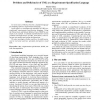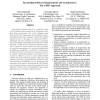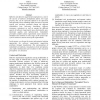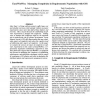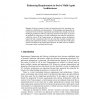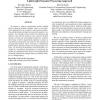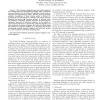MKWI
2008
14 years 5 months ago
2008
: For the development of software requirements within a team, efficient communication and a systematic approach are necessary. Because of the complexity of the task, the need for s...
COMPSAC
2004
IEEE
14 years 7 months ago
2004
IEEE
The development of complex software systems involves collecting software requirements from various stakeholders. Often stakeholder perceptions conflict during the requirements eli...
IWSSD
2000
IEEE
14 years 8 months ago
2000
IEEE
In recent years, UML has become a standard language for modeling software requirements and design. In this paper we investigate the suitability of UML as a semiformal requirements...
RE
2001
Springer
14 years 8 months ago
2001
Springer
Little guidance and few methods are available to refine a set of software requirements into an architecture satisfying those requirements. Part of the challenge stems from the fac...
RE
2001
Springer
14 years 8 months ago
2001
Springer
Effective and efficient requirements negotiation is a key to the success of software development efforts. For large projects, this can be especially difficult to do effectively an...
HICSS
2002
IEEE
14 years 8 months ago
2002
IEEE
More than ¾ of large software projects suffer large cost and schedule overruns or fail outright. Deficits in project requirements cause more than half of these failures and overr...
WER
2004
Springer
14 years 9 months ago
2004
Springer
Software systems of today are characterized by the increasing size, complexity, distribution and heterogeneity. Understanding and supporting the interaction between software requir...
QSIC
2005
IEEE
14 years 9 months ago
2005
IEEE
We propose a software requirements analysis method based on domain ontology technique, where we can establish a mapping between a software requirements specification and the doma...
KBSE
2007
IEEE
14 years 10 months ago
2007
IEEE
Monitoring the satisfaction of software requirements and diagnosing what went wrong in case of failure is a hard problem that has received little attention in the Software and Req...
HASE
2008
IEEE
14 years 10 months ago
2008
IEEE
— UML 1 sequence diagrams have been widely employed for modeling software requirements and design. UML 2 introduced many new features, such as Combined Fragments, to make sequenc...

